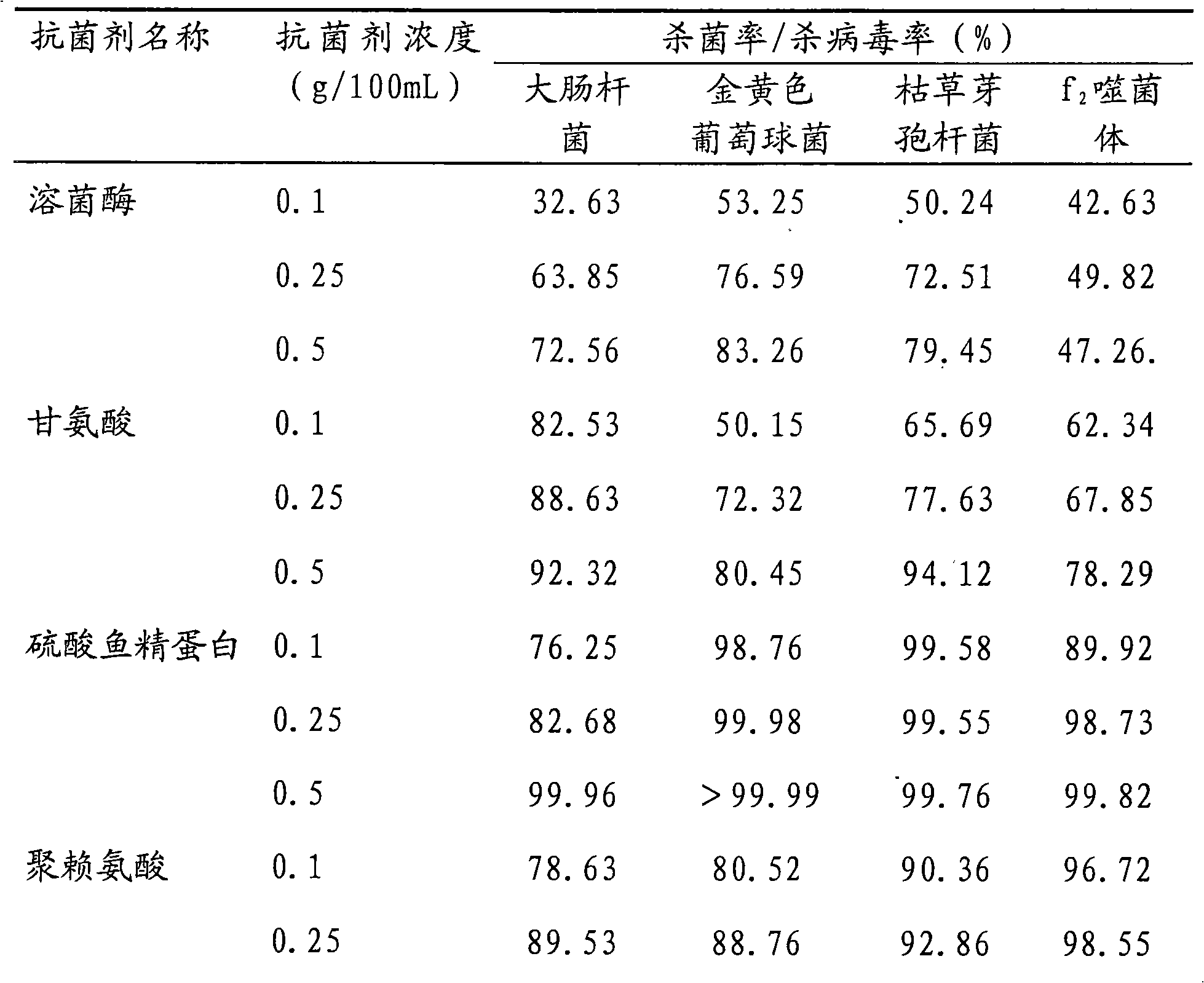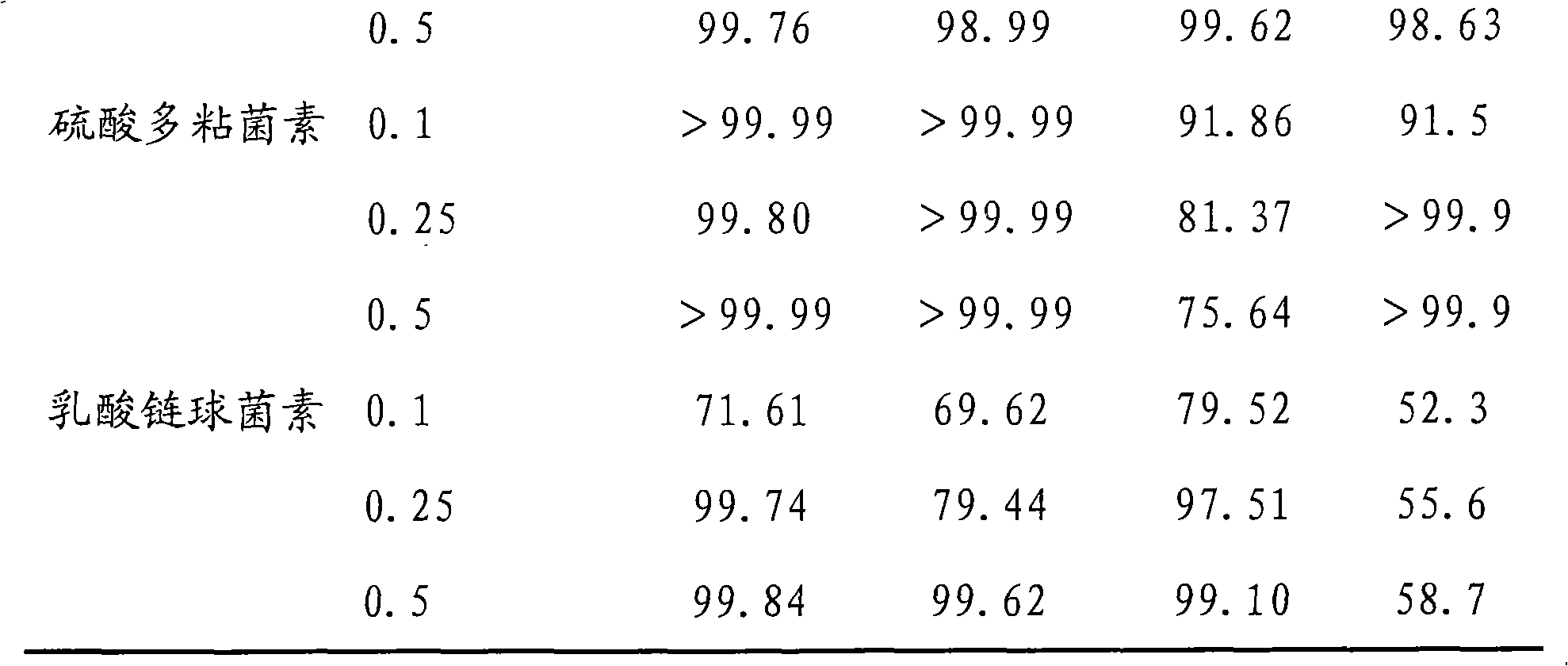Broad spectrum biological disinfection air filtering material and preparation method thereof
An air filter material and bactericidal technology, applied in the field of broad-spectrum biological bactericidal air filter material and its preparation, can solve the problems of reducing the number of indoor air particles, destroying the filter structure, affecting people's health, etc., and achieving processing adaptability The effect of stability, low dosage and stable properties
- Summary
- Abstract
- Description
- Claims
- Application Information
AI Technical Summary
Problems solved by technology
Method used
Image
Examples
Embodiment 1
[0022] Preparation of biocidal air filter material
[0023] Immerse the glass fiber filter paper in 10% γ-aminopropyltriethoxysilane toluene solution at room temperature for 10 hours, wash it with toluene, and air-dry it at room temperature; Aldehyde groups are introduced into the surface of the filter material, and the aldehyde groups condense with the amino groups of the polypeptide antibacterial agents in Table 1 to form Schiff's bases to make bactericidal air filter materials.
[0024] Bactericidal experiment
[0025] Selection of bacterial strains: Staphylococcus aureus (ATCC 6538) as a representative of Gram-positive bacteria; Escherichia coli (8099) as a representative of Gram-negative bacteria; Bacillus subtilis (ATCC 9372) as a representative of bacterial spores; Penicillium penicillium (ATCC 10509) as a representative of fungi; Escherichia coli f 2 Phage as a representative of virus.
[0026] For the evaluation of the effect of killing bacteria and viruses, refer ...
Embodiment 2
[0035] 0.5% polylysine, 0.25% protamine sulfate (dissolved in the buffer solution of pH9~10 according to weight-to-volume ratio) are jointly immobilized on the filter paper that has been aldehydelated, and are measured according to the bactericidal experiment among the embodiment 1 to bacteria and virus killing rate, the results are as follows:
[0036] Table 2 The killing effect of two antibacterial agents on bacteria and viruses
[0037]
[0038] Note: ① The concentration of bacteria solution eluted on the control sample is: Escherichia coli 1.38×10 4 cfu / mL, Staphylococcus aureus 1.62×10 4 cfu / mL, Bacillus subtilis 1.27×10 4 cfu / mL, f 2 Phage 1.0×10 3 pfu / mL.
[0039] ②The following is the abbreviation of the abbreviation: L stands for polylysine (0.5%), Y stands for protamine sulfate
[0040] (0.25%).
[0041] 0.5% polylysine, 0.25% protamine sulfate, and 0.1% natamycin were jointly immobilized on the aldylated filter paper, and the growth of mold visible to the ...
Embodiment 3
[0043] 0.5% polylysine, 0.5% nisin (dissolved in the buffer solution of pH9~10 according to weight to volume ratio) are jointly immobilized on the filter paper that has been aldehydeylated, measure according to the bactericidal experiment among the embodiment 1 to bacteria and virus killing rate, the results are as follows:
[0044] Table 3 The killing effect of two antibacterial agents on bacteria and viruses
[0045]
[0046] Note: ① The concentration of bacteria solution eluted on the control sample is: Escherichia coli 1.38×10 4 cfu / mL, Staphylococcus aureus 1.62×10 4 cfu / mL, Bacillus subtilis 1.27×10 4 cfu / mL, f 2 Phage 1.0×10 3 pfu / mL.
[0047] ②The following are the abbreviations of the abbreviations: L stands for polylysine (0.5%), and R stands for nisin (0.5%).
[0048] 0.5% polylysine, 0.5% nisin and 0.1% natamycin were immobilized on the aldylated filter paper, and the growth of mold visible to the naked eye appeared on the filter paper.
PUM
 Login to View More
Login to View More Abstract
Description
Claims
Application Information
 Login to View More
Login to View More - R&D
- Intellectual Property
- Life Sciences
- Materials
- Tech Scout
- Unparalleled Data Quality
- Higher Quality Content
- 60% Fewer Hallucinations
Browse by: Latest US Patents, China's latest patents, Technical Efficacy Thesaurus, Application Domain, Technology Topic, Popular Technical Reports.
© 2025 PatSnap. All rights reserved.Legal|Privacy policy|Modern Slavery Act Transparency Statement|Sitemap|About US| Contact US: help@patsnap.com



